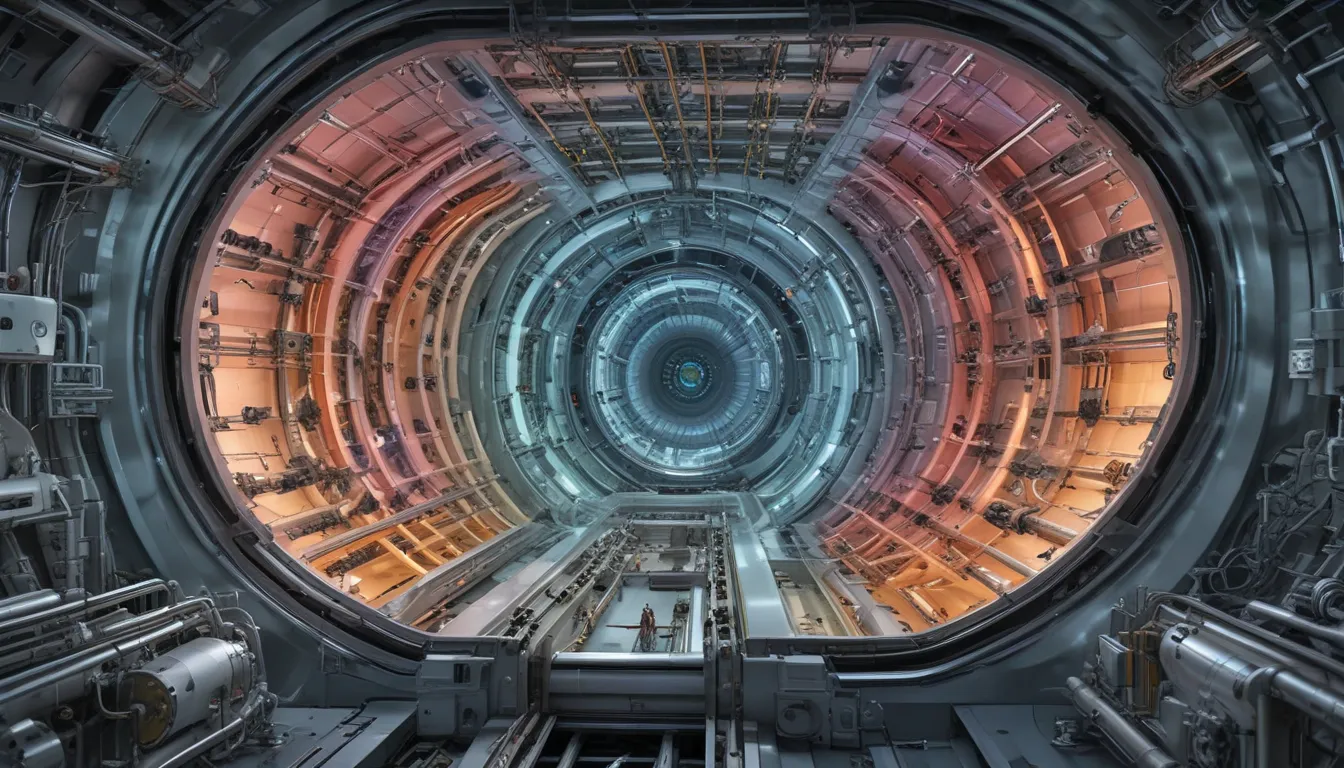A Note About Images: The images used in our articles are for illustration purposes only and may not exactly match the content. They are meant to engage readers, but the text should be relied upon for accurate information.
Synchrotron radiation, a captivating phenomenon in the realm of physics and scientific research, has transformed our understanding of the world around us. As charged particles such as electrons or positrons accelerate through a curved trajectory, they emit powerful beams of electromagnetic radiation known as synchrotron radiation. This radiation spans a wide spectrum of wavelengths, from infrared to X-rays, making it a versatile and indispensable tool for scientists across various disciplines.
Understanding Synchrotron Radiation
-
High-Energy Radiation: Synchrotron radiation is a form of high-energy electromagnetic radiation produced when charged particles are accelerated to high speeds, emitting intense beams of light.
-
Bending and Acceleration: Charged particles emit synchrotron radiation as they travel through a curved path or experience acceleration, leading to a wide range of wavelengths being generated.
-
Brightness and Intensity: Synchrotron radiation is incredibly bright and intense, with concentrations that can be up to a billion times brighter than sunlight, enabling precise scientific measurements.
The Role of Synchrotron Facilities
Synchrotron radiation facilities around the world serve as hubs for cutting-edge scientific research, housing powerful synchrotrons that provide researchers with access to intense beams of radiation for a myriad of experiments. These facilities foster collaboration among scientists from diverse fields, accelerating scientific breakthroughs and advancing innovations in medicine, technology, and environmental conservation.
Applications of Synchrotron Radiation
-
Interdisciplinary Utility: Synchrotron radiation has become an essential tool for scientists in physics, chemistry, biology, and materials science, enabling detailed investigations at the atomic and molecular levels.
-
Material Analysis: By analyzing the interaction between synchrotron radiation and samples, scientists can reveal valuable insights into the structure, composition, and behavior of materials.
-
Biological Studies: Intense synchrotron beams allow researchers to probe the intricate structures of biological molecules, offering profound insights into their functions and potential medical applications.
-
Environmental Research: Synchrotron radiation aids researchers in studying environmental processes, from understanding pollutants to tracking chemical reactions in the atmosphere, contributing to conservation efforts.
Advancements and Innovations
-
Non-Destructive Imaging: Synchrotron radiation facilitates advanced imaging techniques such as X-ray microtomography, enabling scientists to examine internal structures without causing damage.
-
Drug Development: By studying atomic and molecular details using synchrotron radiation, scientists can design more effective pharmaceuticals and develop innovative therapeutic strategies.
-
Ancient Artifacts Analysis: Synchrotron radiation is utilized to analyze the elemental composition and structure of archaeological objects, unraveling insights into their historical significance.
Technological Impact and Global Reach
-
Facility Diversity: Synchrotron facilities exist worldwide, from the European Synchrotron Radiation Facility in France to the Advanced Photon Source in the United States, pushing the boundaries of scientific discovery.
-
Collaborative Platforms: Synchrotron facilities serve as platforms for collaborative research, bringing together experts from different disciplines to exchange knowledge and accelerate scientific progress.
-
Innovation Catalyst: Synchrotron radiation plays a crucial role in innovation, driving technological advancements in energy storage, solar cells, and the development of novel materials.
Conclusion: Embracing the Future of Synchrotron Radiation
In conclusion, the remarkable properties of synchrotron radiation, from its brightness and intensity to its diverse applications, underscore its profound impact on scientific research. As we continue to unlock the mysteries of the universe, synchrotron radiation remains a vital tool in our quest for knowledge and innovation. By appreciating the intricate mechanisms behind synchrotron radiation and its transformative capabilities, we embrace a future filled with limitless possibilities for scientific discovery and advancement.
FAQs
-
What is synchrotron radiation?
Synchrotron radiation refers to the emission of electromagnetic radiation by charged particles accelerating in a synchrotron, spanning a spectrum of wavelengths. -
How is synchrotron radiation produced?
Charged particles, when accelerated in a circular path using powerful magnets, emit radiation in the form of photons, creating synchrotron radiation. -
What are the practical applications of synchrotron radiation?
Synchrotron radiation is used in materials science, biology, medicine, and engineering to study atomic structures, biomolecules, and complex materials. -
How does synchrotron radiation differ from other radiation sources?
Synchrotron radiation offers intense and focused beams, covering a broad spectrum of wavelengths for detailed analyses in scientific research and industrial applications. -
Are synchrotron facilities accessible to all researchers?
Synchrotron facilities welcome researchers globally, with access granted based on scientific merit through proposal submissions and peer review processes. -
How can synchrotron radiation contribute to medical advancements?
Synchrotron radiation enhances medical imaging techniques, aiding in cancer research, drug development, and understanding biological tissues at a microscopic level. -
Is synchrotron radiation safe?
Synchrotron radiation is tightly controlled and shielded, ensuring safety for researchers and the environment, with strict protocols in place to minimize any potential risks.
The journey of synchrotron radiation from acceleration to application is a testament to human ingenuity and scientific exploration. As we embrace the innovative possibilities it offers, the world of synchrotron radiation continues to inspire and propel us towards a future enriched with knowledge and discovery.






